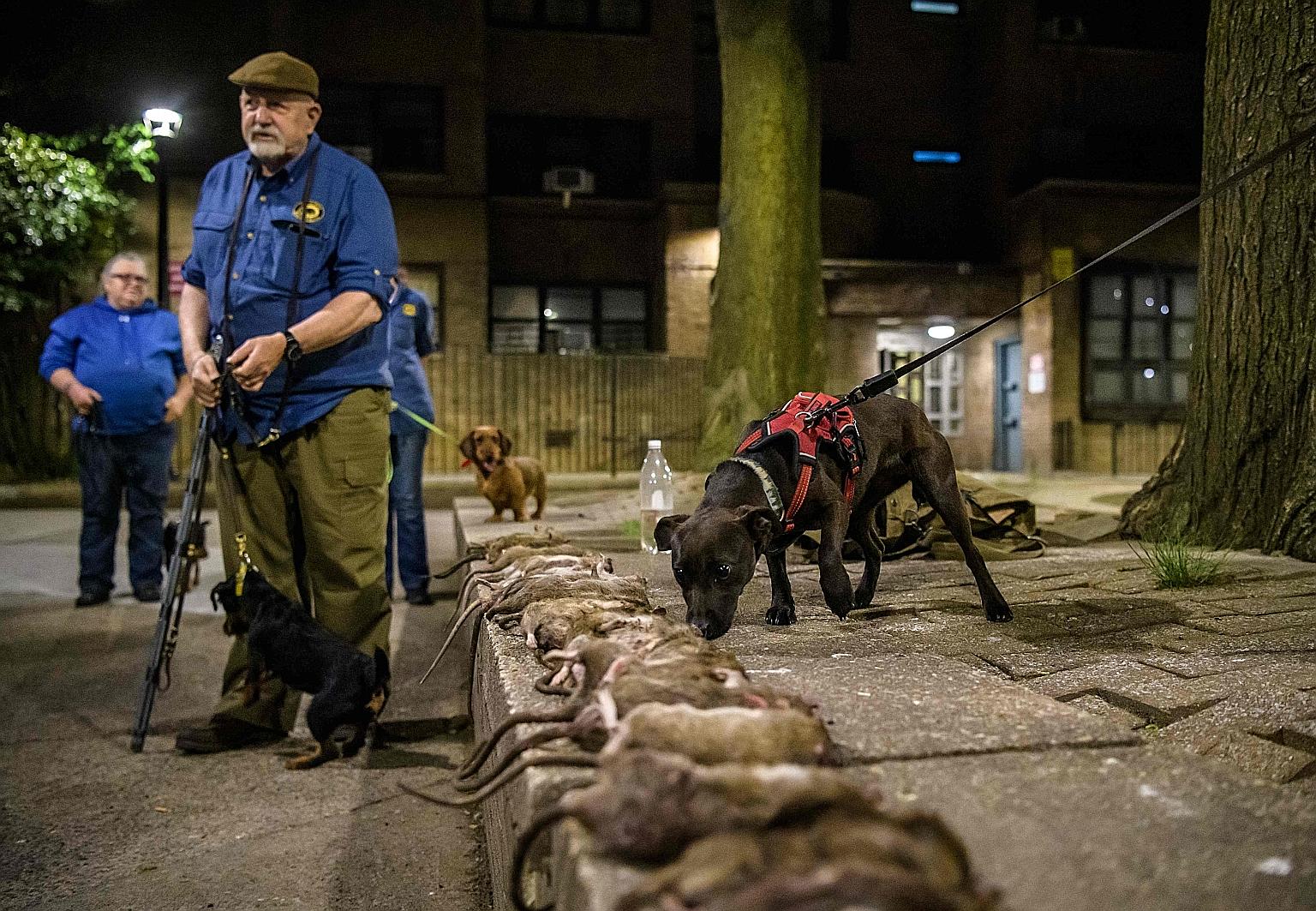Dog lovers use pets to tackle New York's rodent problem
Sign up now: Get ST's newsletters delivered to your inbox

Members of the Ryders Alley Trencher-fed Society, or R.A.T.S. for short, hunting rats with their dogs in a New York neighbourhood in Lower Manhattan on May 14. They have been chasing vermin for about 30 years and have maintained their nocturnal hunts during the pandemic, albeit slightly less regularly.
PHOTO: AGENCE FRANCE-PRESSE
Follow topic:
NEW YORK • Late on a Friday night, eight dog enthusiasts and their pet pooches prowl dark alleys in New York's Lower East Side with one mission - to hunt and kill as many rats as possible.
The dogs, mostly terriers, pant and strain at their leashes before diving into trash bags and emerging seconds later with a convulsing rodent between their teeth.
"They're bred for the job. They're wired for the job. They live for the job," explained Mr Richard Reynolds, organiser of the Ryders Alley Trencher-fed Society, or R.A.T.S. for short.
New York's furry rodents are notorious. Legend has it there are as many rats in the city as humans (some eight million), with public health officials regularly testing new techniques to control the population, including placing dry ice in rat burrows to asphyxiate them.
Shortly into the Covid-19 crisis, the Centres for Disease Control and Prevention warned of "unusual or aggressive rodent behaviour" after restaurants and offices closed, disrupting food sources.
That has not deterred the men and women volunteers of R.A.T.S. and their dogs. They have been chasing vermin for about 30 years and have maintained their nocturnal hunts during the pandemic, albeit slightly less regularly.
Shorter-legged dogs such as Jagdterriers flush out rodents from piles of garbage, construction debris and bushes while faster, longer-legged dogs like Bedlingtons stand back, ready to pounce.
The rat catchers pick up the carcasses by their tails and deposit them in a single-strap fabric bag. The contents are emptied and counted at the end of the night.
The group sends DNA samples to universities conducting research and provides frozen rats for falcons to eat at a nearby avian rehabilitation centre.
Mr Reynolds, a dog-show judge, was in a park in New Jersey in the 1990s when his pooches started killing rats during a show there. The park attendant asked if they would come back to help, and R.A.T.S. was born.
The group answers calls and Facebook messages from rat-troubled residents who are grateful for its swift and effective response. The city government does not recommend the practice, citing a risk of dogs catching a serious disease known as leptospirosis.
But city officials have not stopped the group as the catchers are not violating the health code.
Dr Michael Parsons, a rat expert at Fordham University, likens the hunts to putting "a Band-Aid on cancer".
Reducing food waste and refuse is more effective for controlling the rat population, he said. But while saying the group does not make a "heavy impression" on New York's rodent population, he added that it does "contribute something to the community".
AGENCE FRANCE-PRESSE

